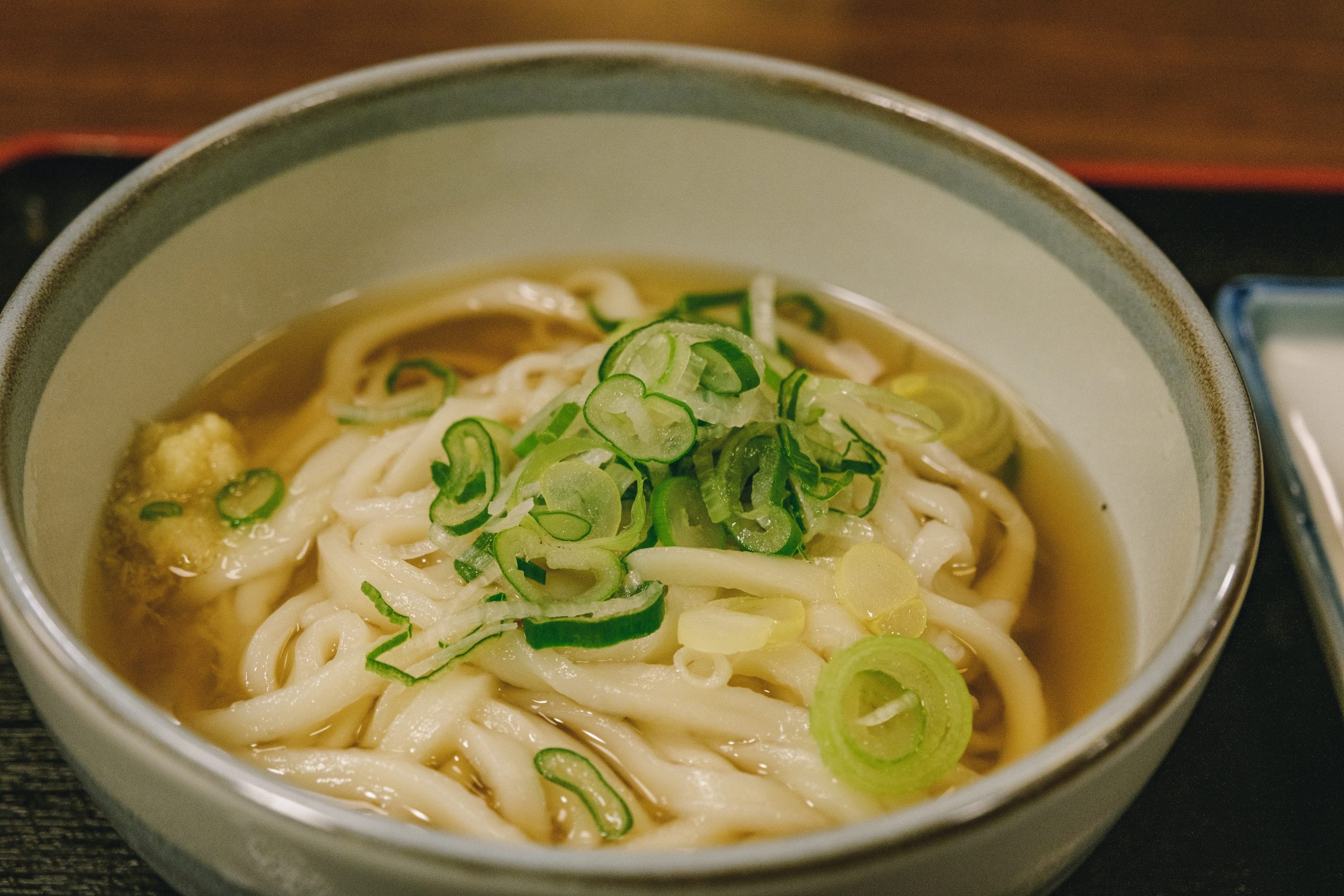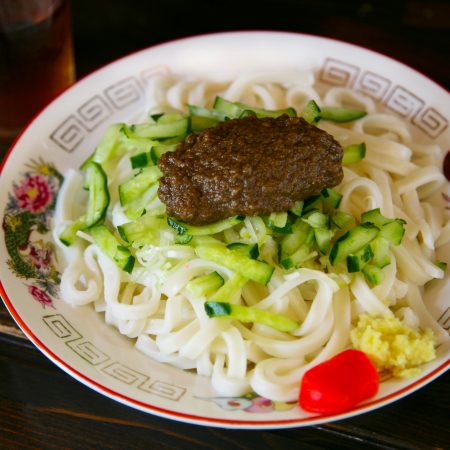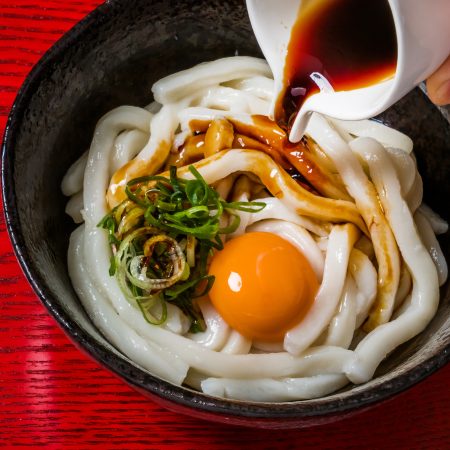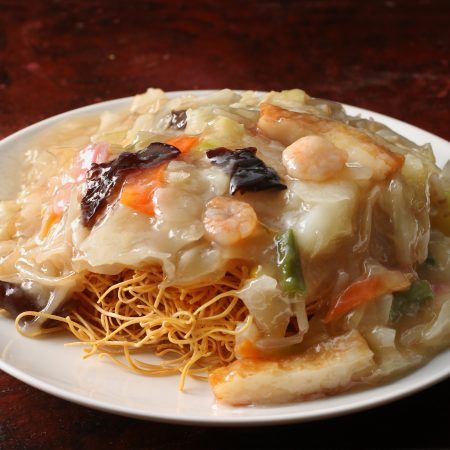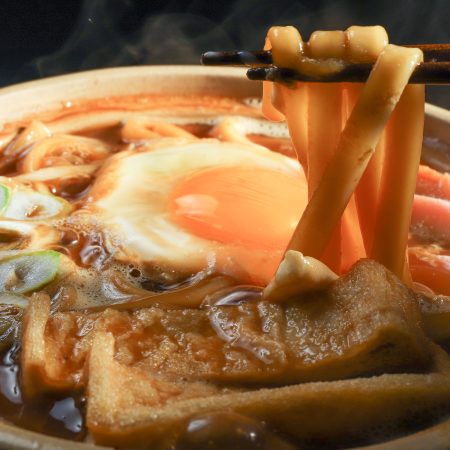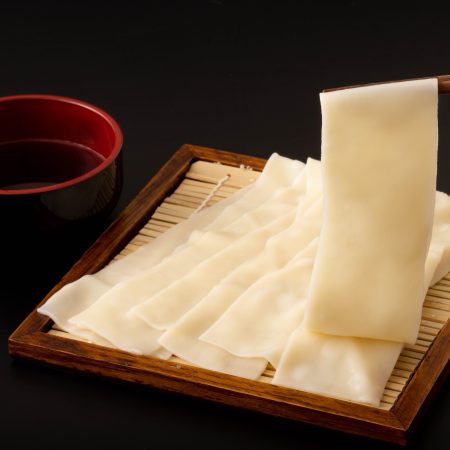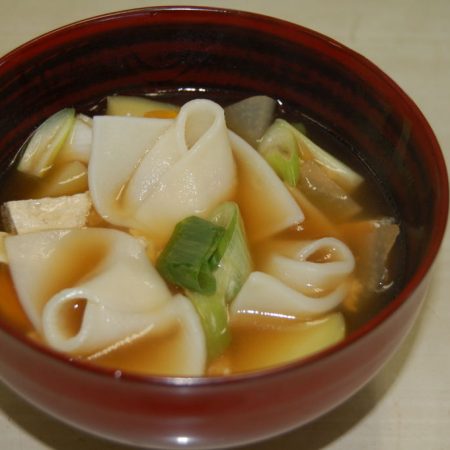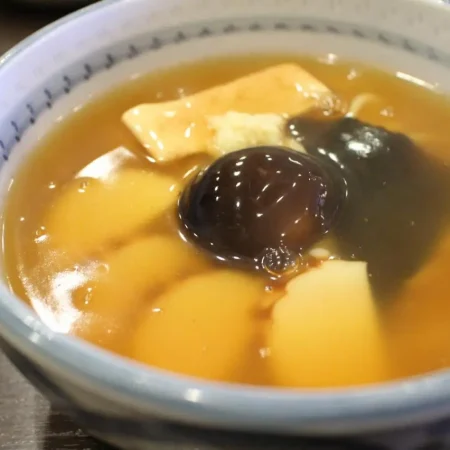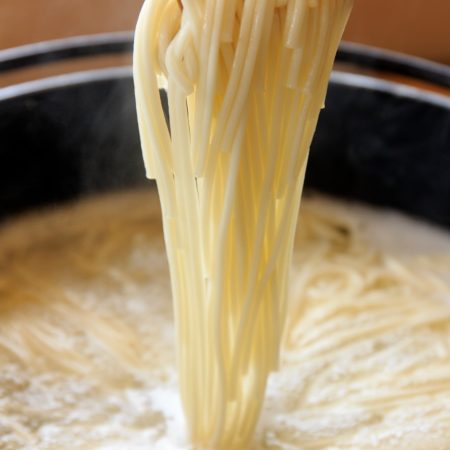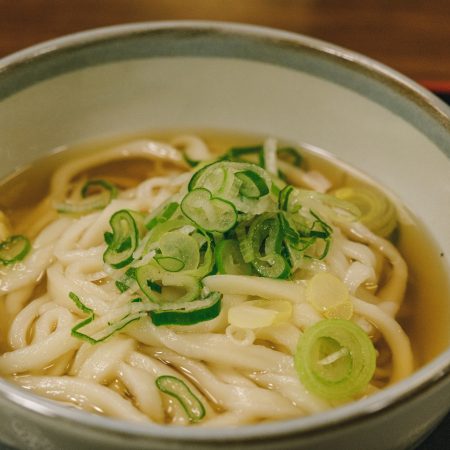Himi Udon is a local specialty in Toyama, characterized by its thin noodles made using a labor-intensive hand-stretched method. It is known for its strong chewiness and smooth texture that can be enjoyed whether served cold or hot, making it a year-round treat.
Unique for its robust chewiness and stickiness, it offers a texture akin to rice cakes and a satisfying bite. This distinct texture is a key reason for its popularity.
The Distinctive Method of Himi Udon
Hand-stretched Method
The common method is "hand-kneading," where the dough is hand-kneaded, stretched by foot, and cut with a knife.
On the other hand, Himi Udon uses the "hand-stretched" method. Instead of spreading the dough, it is elongated into a long shape resembling a stick or rope and repeatedly stretched from both ends until it becomes thin noodles.
Regarding the hand-stretched method, it's more about the "throat sensation" rather than the texture.
A Blend of "Hand-Stretched" and "Hand-Kneaded"
What's impressive about Himi Udon is that it combines the "hand-stretched" method with elements of "hand-kneading."
During the dough-making process, it is repeatedly hand-kneaded and foot-trodden, just like in hand-kneading. This ensures the desired stickiness and resilience in the noodles are achieved.
Moreover, while hand-stretched noodles often use oil during stretching, Himi Udon is stretched without using oil, allowing the full flavor of the udon noodles to shine.
"The Phantom Udon"
The hand-stretched process takes considerably more effort compared to hand-kneading, making it a labor-intensive method. As a result, Himi Udon used to be referred to as the "phantom udon."
Today, three manufacturers in Himi City are dedicated to the production and sale of Himi Udon, and it has become widely available.
Himi Udon is occasionally considered one of the "Big Three Udon" in Japan, alongside Sanuki Udon from Kagawa, Inaniwa Udon from Akita, and Mizusawa Udon from Gunma. It has gained recognition as a brand that might be on par with Sanuki and Inaniwa Udon.
Not only in Himi City but also in restaurants and dining establishments across the prefecture and beyond, you can find places proudly promoting the use of Himi Udon.
Himi Udon's history is long and it originated from the "Noto Wajima Somen." It's said that the technique of Noto Wajima Somen, which started in the Muromachi period, was adopted by Takoka-ya in 1751 to create Himi Udon. Noto Wajima Somen was highly regarded during the Edo period and used as an offering to the Tokugawa shogunate and other prestigious purposes.
The hand-stretched technique from Noto was passed down to Himi, and from there, udon development flourished, eventually becoming Himi Udon. It continues to be made with traditional craftsmanship to this day."
I hope this translation is helpful. If you have any further questions or need additional assistance, please feel free to ask.

